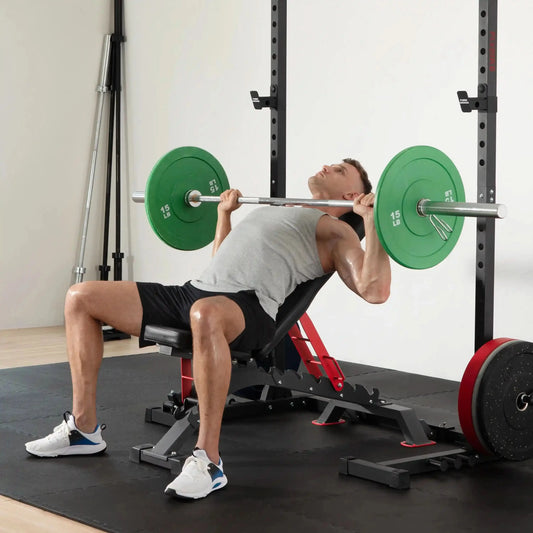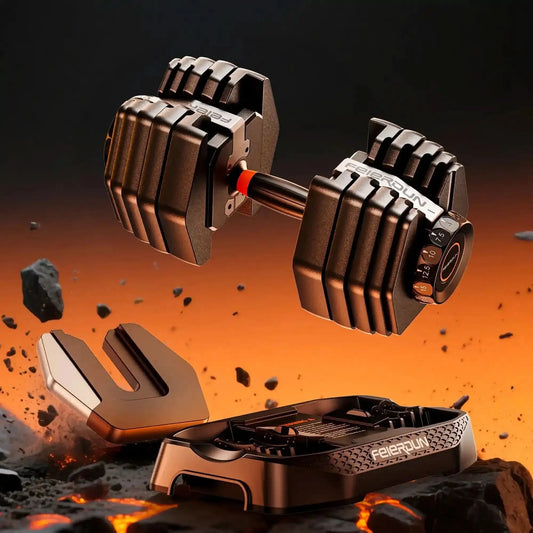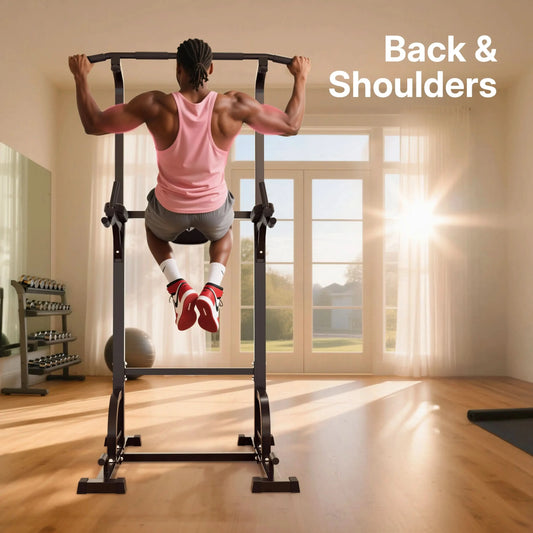Several weightlifters will inevitably come to a point where they question: Why isn’t my upper chest growing as quickly as it should be? Does the incline bench press really isolate multiple different muscular groups? Why is my upper chest still falling well behind?
Such concerns are understandable, and this article will address each query once and for all with hard facts and evidence-based findings. Perhaps, rather than the upper chest, you are targeting a
The incline bench press, as a move, is commonly maligned. A slight adjustment to the bench angle will transfer tension from the chest to the shoulders or vice versa, depending on your body position, hand placement, and bar trajectory. It is crucial to know which part of your body is being targeted by the incline bench press so that you can build a strong chest while applying minimal pressure to your joints.
Keep reading!
What Is The Incline Bench Press, And Why Use It?
Additionally, it involves a chest press completed with a fixed bench position at an incline, often between 15-30 degrees. The action highlights the upper chest region with contributions by the anterior deltoids as well as the triceps brachii to achieve the press motion.
How to Perform An Incline Bench Press?
First, slight angles allow the upper pecs to remain under tension while still utilizing proper pressing mechanics. The bar should move as if you are performing a chest press, not a shoulder press. Align your gaze just behind the bar, plant your feet, and make sure the bar will make contact high, closer to the upper part of your sternum than the flat press does.
As a result, you’ll contract and lower your scapulae to create a solid foundation. “Setting” your body provides a foundation for your pecs, minimizes your anterior shoulder slide, and enables you to make consistent contact with each rep. A well-executed set will allow your anterior deltoids to work alongside your pecs, rather than dominate the motion.
Such as keep elbows at a 45-degree angle to the body so the clavicular pectoralis can contract fully and smoothly. When elbows extend out, work your delts, but if they are too far in, you’ll emphasize triceps. The middle pressing motion with a light touch and smooth lockout releases tension on the pecs.
What Muscles Are Worked By the Incline Bench Press?
The prime movers are the upper part of the pectoralis major, or clavicular head. Strongly assisting are the anterior deltoid and triceps brachii, whose stabilization activities fix the shoulder girdle in a central position, an attitude towards which the EMG patterns correspond as well.
Pressing the weight, when done against a slight incline, will align the fibers so that the upper pec can press the weight. One should feel a deep stretch around the collarbone at the bottom part and a squeeze around the top part, which identifies upper pec exercises and not shoulder presses.
A shoulder-involving exercise compared to the flat press, as the path to press involves greater shoulder flexion. The ant. Delt aids, starting the press, and the triceps extend the elbow to complete the press action, lockout failing before the press leaves the chest, or else direct triceps training will resolve the sticking point.
Next, you can quick-check your phrase with this: upper pec first, delts and triceps second, and all times, stab ilizers. If you are experiencing just the shoulder, move the angle down. If you are having flare elbows, tighten up your position and point your elbows 45°.
Which Stabilizers Keep Each Rep Safe And Strong?
It should be noted that the action of holding the position of the shoulder girdle against the motion of the bar involves the involvement of the serratus anterior, rotator cuff, traps, rhomboids, and core, which do not move the bar, but rather determine whether the prime movers can move it or if they will be irritated by the process.
Engage the Serratus musculature to anchor the
The action of the serratus anterior is to resist winging, or to attach the scapula to the rib cage, by “reaching through” with the lockout position, translating this as scaping rather than dumping the scapula forward, resulting in engaging the chest while resisting a forward shoulder roll.
Cuff, Cuff & Upper Back, Recruit Cuff
The job of the rotator cuff is to center the humeral head, while this is completed by the trapezius and rhomboids to keep the shoulder blades fixed and depressed against the bench. You will be able to feel this as you lower the bar or change direction if the involved muscles are functioning correctly.
Crouch The Stomach To Support The Position
A strong hold is what locks the rib cage and pelvis into position so that the angle of the bench is “true.” A small arc is fine for support, as long as you aren’t turning an incline into a pressing motion that you intended to be a flat press.
How Should You Perform the Incline Bench For Results?
Consequently, great reps come from consistent setup and clean execution. Touch high chest, press in a slight arc over the shoulders, and keep reps smooth within one to two reps of your limit.
Dial The Setup Before Unracking The Bar
First, position the bench at a 30-degree angle, which will effectively target your upper chest region without straining your shoulders excessively. Your feet should rest flatly on the floor, with a medium bar grip position. The next critical position involves retracting and depressing your scapular region to position your shoulders, keep your wrists neutral, and finally, lifting the bar to a straight position, which will rest directly above the upper chest region rather than onto your neckline or face.
Lower With Control And Touch Consistently
The descent should be steady, with elbows under the bar and a soft, repeatable touch. Think “touch and go with tension,” not bounce. That bottom position is where the upper pec earns its keep, so protect it with control.
Press With Drive And Maintain Tension
Press up and slightly back to stack the bar over the shoulders while keeping the chest engaged. Lock out without shrugging. Breathe between reps, and keep most working sets at 0–2 reps in reserve for quality volume.
Which Incline Angle And Grip Gives the Best Activation?
About 15–30° often maximizes upper‑pec work while limiting shoulder takeover. A moderate grip (slightly wider than shoulder‑width) balances pec and triceps contribution and keeps shoulders comfortable.
Muscle emphasis across common incline settings
| Incline
|
|
|
|
|
|
|
|
|
|
Feels close to flat; very chest‑driven
|
|
|
|
|
|
Strong upper‑pec focus; common sweet spot
|
|
|
|
|
|
Shoulders dominate for many lifters
|
|
|
|
|
|
More like a shoulder press than a chest press
|
What Mistakes On Incline Bench Kill Progress Fast?
Most stalls come from choices that shift tension off the chest or shorten the quality of work. Keep angles modest, control the bar, and rest long enough to repeat performance. Add progressive overload only when form holds.
-
Setting Too Steep: High angles turn it into a shoulder press.
-
Flaring Early: Wide elbows push load to delts and wrists.
-
Touching Too Low: Bar path drifts and pec tension fades.
-
Rushing Rest: Short breaks cut reps and total stimulus.
-
Ego Loading: Heavy weight with poor control stalls progress.
-
Loose Scapulae: No base means unstable shoulders.
-
Skipping Warm‑Ups: Cold pressing risks pain and missed reps.
How Do You Maximize Upper Chest With This Lift?
Keep what works and remove what doesn’t. Modest angles, clean pauses, and smart accessories amplify the incline’s effect on the upper chest without adding junk volume.
-
Stay In The 15–30° Zone: Bias upper pec without delt takeover.
-
Pause Near The Chest: Build control where fibers lengthen most.
-
Use Dumbbells Strategically: The dumbbell incline press adds range and feel.
-
Finish With A Stretch: Flyes add long‑length tension the bar can’t.
-
Logbook Everything: Small, steady jumps beat random hard days.
How Does Incline Compare To Flat Or Dumbbells?
A flat bar is best for overall chest loading, while an incline better targets the upper pec. Dumbbells increase range and joint freedom; machines add path stability for near‑failure work, like a machine chest press.
Moreover, the incline adds shoulder flexion, so the anterior deltoid works harder than on flat. The flat bench spreads work across the whole pecs. Declines bias lower pec, and dumbbells often feel better on sensitive shoulders due to a freer path.
In turn, barbells are efficient for heavy sets; machines keep you safe when pushing fatigue; dumbbells make small load jumps that help your shoulders. Rotate tools to match recovery and comfort.
Practically, an upper‑body week might anchor with incline on one day and flat on another, with flyes or cables adding stretch work. That mix builds shape and strength while staying recoverable.
Where Can FED Fitness Support Your Incline Setup?
Consequently, a sturdy adjustable bench and precise dumbbells make angle control and load jumps simple at home. For stable angles and reliable progression, explore our
weight benches and our
adjustable dumbbells.
Select an Adjustable Bench For Precise Angles
Notably, an adjustable bench that locks 15–30° lets you bias the upper chest and avoid shoulder‑dominant reps. A wide pad and secure hooks help you focus on form, not wobble.
Use Dumbbells For Small Safe Load Jumps
Then, dumbbells allow small increases that keep technique tight and shoulders happy. Small jumps add up, especially when you track every set and keep your logbook honest.
Conclusion
In short, the incline bench press targets the upper pec first, with the shoulders and triceps helping each rep. Keep angles modest, set your shoulders, and press with control to turn effort into reliable gains. When you think about Muscles Worked by the Incline Bench Press, picture the upper pec driving while stabilizers hold the shoulder steady. If your setup is stable and your progress is measured, your chest will grow stronger and fuller—session after session—on a schedule that fits your life and gear from FED Fitness.
FAQ
What incline is best for upper chest focus?
Fifteen to thirty degrees hits the upper pec without turning the lift into a shoulder press. Steeper angles drive work to the delts.
Why is my incline bench weaker than flat?
Incline recruits less total pec mass and more shoulder flexion. Expect lower loads than flat while keeping form tight.
Should I touch my chest on incline?
A soft touch high on the chest is ideal. Control the bottom, keep elbows under the bar, and avoid bouncing.
Are dumbbells better than barbells for incline?
They are different tools. Dumbbells add range and joint freedom, while barbells load heavier. Both build muscle if you progress.
How long should I rest between heavy sets?
Two to three minutes keeps later sets strong. Short rests often cut reps and reduce total training effect.












